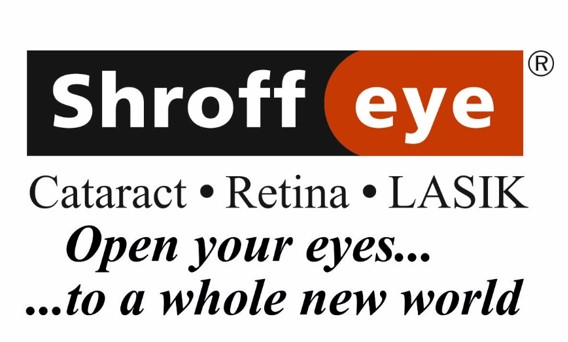Shroff Eye Hospital is India's First Eye Hospital accredited by the Joint Commission International (USA) since 2006. Shroff Eye is also India's first and only Wavelight Concerto 500 Hz LASIK center. Shroff Eye has stood for excellence in eye care since 1919. A firm commitment to quality is at the heart of all services provided at our centers at Bandra(W) and Marine Drive, Mumbai.
Bifocal glasses are necessary for people who have presbyopia (a condition caused by aging of the eyes) in addition to myopia, hyperopia (also called hypermetropia) and/or astigmatism. In other words, you need bifocal glasses if you suffer simultaneously from short-sightedness as well as long-sightedness, a common consequence of aging. Presbyopia is not the same condition as hyperopia, although people who have either one are unable to clearly observe objects at a short distance from their eyes.
Bifocal glasses allow the wearer to focus on different distances. Typically the wearer can focus on more distant objects through the top of the lens, and nearer objects through the bottom part.
Early bifocal lens, which Benjamin Franklin is said to have invented, had a visible line running through the full width of the lens. These bifocals looked like lenses with a diameter marked horizontally. The familiar half-moon bifocal segment, which was smaller, came later.
These days, there are also trifocal lenses, which allow the wearer to have a clear vision of three focal points instead of two, and also multifocal lenses. Progressive lenses are a unique type of multifocal lens where the different lens powers are not differentiated visibly by a line.
How do bifocal lenses work?
The major portion of a lens, even in bifocal lenses, is devoted to distance correction. This is to deal with the myopia, which does not allow a person to see objects at a distance. A small part of the lens is set aside for the correction of near-sightedness. This portion could be of various shapes; it may be half-moon shaped, a narrow rectangular segment, a small round portion, or even the full bottom half of the lens.
The top of the lens serves to focus on distant objects, and the lower part to focus on nearer objects. This principle is based on the idea that we tend to train our eyes downwards while looking at something near – for instance, while reading a book – and we move our eyes slightly upwards while focusing on something in a distance.
How do bifocal lenses work?
The major portion of a lens, even in bifocal lenses, is devoted to distance correction. This is to deal with the myopia, which does not allow a person to see objects at a distance. A small part of the lens is set aside for the correction of near-sightedness. This portion could be of various shapes; it may be half-moon shaped, a narrow rectangular segment, a small round portion, or even the full bottom half of the lens.
The top of the lens serves to focus on distant objects, and the lower part to focus on nearer objects. This principle is based on the idea that we tend to train our eyes downwards while looking at something near – for instance, while reading a book – and we move our eyes slightly upwards while focusing on something in a distance.
Bifocal Reading Glasses
Reading glasses are necessary for most people with hyperopia and/or presbyopia. Reading requires the ability to focus one’s eyes at quite a close distance, and the conditions of hyperopia and presbyopia do not allow a person to see clearly so close. If a person is simultaneously myopic and presbyopic, then they require either two different sets of glasses for different distances, or a pair of bifocal reading glasses.
Reading glasses in general could be over-the-counter (non-prescription) glasses, or prescription reading glasses. Bifocal reading glasses fall exclusively into the second category. Non-prescription glasses, which are readymade, do not take into account astigmatism, and they cannot replace prescribed corrective lenses. Bifocal reading glasses cannot be readymade, since they are made specifically for the prescription required by a particular person.
Progressive Lenses: The Future of Bifocals?
Gone are the days when a wearer of bifocal glasses was immediately recognisable by the telltale line on the lens. Bifocals in recent years are being given a run for their popularity by progressive lenses, which lack that characteristic line.
Also know as progressive addition lenses, these lenses are multifocal. Progressive lenses have a continuation of multiple lens powers, enabling the wearer to have a clear sight of objects that are close, or at a distance, or in the mid-range. This is an improvement over bifocals, where near objects are clearly visible, as are distant ones; but the mid-range appears blurry. Progressive lenses are free of this problem. Moreover, people who do not want to advertise that they are old enough to need bifocal glasses are being increasingly drawn towards progressive lenses, which have no telltale line running through them.
The line in traditional bifocals and trifocals is not only an aesthetic problem. It also causes a slight annoyance called ‘image jump’. Since the different lens powers are so sharply distinguished from each other, images appear to “jump” as the wearer’s vision crosses over the line that separates the different lenses.
One problem with progressive glasses is that of peripheral vision. A person might find, while looking downwards to the far left or right, that the vision along the periphery of the lens is somewhat blurred. Also, quick head movements while wearing progressive lenses might cause a “swimming” sensation for some. However, most people can wear progressive glasses successfully after a short adaptation period of not more than a few days.






